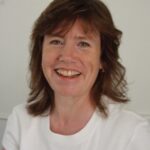Moving Beyond the Mind in Mind/Body Medicine: The Ashayas’ Ascension
Cheryl A. Kasdorf, ND
How do we access the healing power of nature? Where do we look for it? I found it by moving beyond the mind to experience the absolute source of well-being, where dis-ease not only is impossible, but there is no memory of it existing. The restoration of wholeness, or healing, arises from that place.
Before naturopathic medical school, during and since, I have investigated many methods of mind/body medicine, using visualization, finding issues and beliefs, making affirmations and choices, even using muscle testing and dowsing to harness the power of the mind and move the energetic system of the patient towards healing. The more I got into these methods, the more I uncovered deeper issues and beliefs, and dissected even more details of what was wrong to find the underlying cause and make the correction. I quickly became frustrated at the endless uncovering of what was wrong. By continuing to focus on what was wrong in order to neutralize, eliminate or fix it, I locked into an endless process, moving me away from the stream of well-being.
We can know as a concept that our true nature is well-being and wholeness, but having a concept does not actualize wellness. The gap between the concept of wellness and its experience is often filled with other concepts, called faith and hope. When wellness is experience-based, faith and hope are replaced by a solid inner knowing resting in peace and joy.
The outward movement of the mind to think, fix, analyze and figure out is an addiction in life, reflected in mind/body medicine as well. Oh yes, intuition plays a big part, but even so, there remains an identification with whatever is going through the mind, what we are thinking, feeling, sensing and perceiving. When the quantity of thoughts or feelings changes, it may feel like progress, but it remains the same identification. Changing the quality of thoughts from negative to positive, going up the scale to more positive emotions, may feel better, but we are still stuck in the same identification, still identifying with whatever is in the mind, which is the cause of dis-ease in life. What is worse is fighting against what is there, because that makes the thoughts and feelings seem more real, reinforcing the identification.
Moving the Mind Inward
When the mind moves inward, it ceases to identify with thoughts, feelings, perceptions and so on. We have had moments of this experience in nature, in sports, in intimate relationships; and we see it in the innocence and utter absorption in the moment within infants and young children. But if we try to grasp that experience or recreate it, it is elusive. As it has become our habit to move our attention outward, a technique can help us relearn how to move the mind inward. This inner movement allows us to rest in the stillness, well-being and peace of our true nature. And there is where we find wholeness, the healing power of nature. As our true nature is infinite, the peace and wholeness is also ever more and more full!
This inner movement of the mind is the essence of meditation and prayer. Too often, it is misunderstood or taught differently. Books and seminars are filled with inspiration regarding being present in the moment and finding happiness. Even when completely absorbed in a task, thinking we are present in the moment, most likely we are not aware of that “Still Presence.” To be sure, it is always there, as it is our true nature, but our attention is not on it. To train our attention on our true nature within, that place of peace and well-being, takes a tool and some practice.
The tradition that I practice and teach maintains this simplicity and clarity. The Ishayas’ Ascension is a form of meditation that teaches one to “rise beyond” or “ascend” the identification with the beliefs, thoughts and feelings in the mind. This is done by simply replacing the incessant chatter of the mind – whether emotions, thoughts or beliefs – with a statement of pure Truth, an Ascension Attitude. Being pure Truth, the Attitude resonates with the Stillness within, effortlessly drawing our attention there. The Ascension Attitude is satisfying to the mind, as it is a combination of a powerful upward-spiraling emotion with an awe-inspiring concept and so causes both hemispheres of the brain to ascend according to their particular functions. The right- and left-brain functions come into alignment, there is a shift in mental attitude and the resulting experience is Peace and Stillness.
The Ishayas’ Ascension is an ancient tradition that is for “full consciousness” (the meaning of the Sanskrit word “Ishaya”) and thereby against nothing. When identifying with full consciousness, there is nothing else, and certainly nothing to neutralize, eliminate or fix. Everything that does not resonate with the wholeness of well-being ceases to manifest, slowly or quickly.
My experience of paying attention to that still presence of well-being has stabilized through my daily practice, but was given a quantum leap during a six-month retreat where I also learned to teach the techniques of the Ishayas.
Wellness Defines the Tools
In my office, making the “Stillness” predominant enhances the therapeutic relationship in that all I see in the patient is his or her wellness, and through that I am inspired as to the naturopathic tools that will support the patient in achieving that wellness. I practice a form of homeopathy that balances the person’s temperament, constitution and reactional mode to detoxify and effect healing. For some, I recommend Bowen therapy (soft tissue manipulations often described as a “homeopathic massage”) or Craniosacral therapy to balance functional and energetic systems. That is supported with lifestyle recommendations, including learning The Ishayas’ Ascension when appropriate. That way, the patient is empowered with a tool that not only reduces stress in the moment, but is a path to remembering his or her well-being inside.
When interviewing a patient, I rest in the Still Presence of well-being, curious as to the story the patient is telling me. I ask questions to round it out; not questions from a list, but what arises effortlessly in the moment from the “Silence” to complete the picture. There is no effort in this, as there is not an “I” doing it. At some point, I collect physical data to confirm things and then match homeopathic remedies to what I have perceived. The analytical part of my brain is functioning at this point; my education was not wasted! But it is functioning in service of the “Still Presence,” noticed peripherally and secondary to the focus on the Presence. I continue with recommendations until I get a sense of completion.
The same holds true with my bodywork treatments. I gather information about what is happening, get an outline of treatment, and have a knowingness from the Silence what to include and when treatment is done. There are no voices, guides or angels, as some people experience when using intuition, but a direct knowing. I purposely do not seek out voices, guides or angels, because they are all manifestations from, and as such, not the Source. Sometimes, after an insight, a packet of information streams through my head like an explanation, which is quite satisfying for my intellect. The knowing always comes first, so I recognize it is pure intuition and not a reasoned fabrication of the intellect.
It was in learning Craniosacral therapy that I developed some skills of listening in the Silence, although I was not aware of what I was doing or that I could do it any other time. I experienced the pace of Craniosacral therapy as meditative, so I did nothing except listen through my touch on the areas of the body specified in the work, which resulted in getting clear intuition of the state of the body and what to do next. By learning to turn the mind inward with the teachings of the Ishayas, I recognized what I was doing and could capitalize on it.
I contrast this experience with my years in practice before I learned Ascension. I was hungry for more knowledge and read and researched a lot, out of a sense that if I knew enough, I would be able to handle the patients that came through my door. That quest for knowledge was endless, and I always had a sense that I didn’t know enough. In a field like naturopathic medicine, it is tempting to seek a broad knowledge; and indeed, we have continuing education requirements to keep us in touch with ever-expanding developments. However, when it is out of a sense of lacking, it is a need that is never satisfied. Now I delight in learning things, but am selective as to those things that feed my passion, and I learn out of pure joy of discovery.
Patient Affirmations
I taught the Ishayas’ practice to a colleague, Dr. Susan Godman, ND. She felt she already was calm inside, but after learning to Ascend, she feels it at a much deeper level. Previously, her patients commented that her office was peaceful; now her patients actually go to that peaceful place upon entering the office. She reported having some rough times in late 2006, and says she never would have survived them without the Ascension Attitude, used both with eyes closed as a meditation and with eyes open. When chaos was happening around her, her experience was as if standing at the end of a pier in Tahiti looking out over the sea to the horizon and feeling infinite peace.
My patients also report amazing experiences. One man, a financial planner, lives a very stressful life. His wife knew how to meditate, and often told him to just sit down and let his mind get quiet. Whenever he tried, he became more agitated, as his mind became even more active. He came to my introductory talk and participated in an exercise where we simply close the eyes and watch what is going through the mind. With those instructions, he experienced for the first time his mind actually settling, and was so impressed he signed up for the class. Since learning to Ascend, he practices “when he needs it” (not ideal) and still affects a drop in blood pressure from around 200/110 to 120/80 after sitting down to a closed-eye Ascension session.
Another student reported being diagnosed with hypertension, and getting medication. Initially, the blood pressure came down, but over months it crept up again. At a return visit to his doctor, the dosage was increased. Again, there was an initial improvement in blood pressure, then it gradually crept up into unhealthy ranges. After the third time, the student recognized that the medications were not addressing the cause, and he stopped taking them. He had always been told to meditate to relieve stress, so he took my class. In one month, he reported normal blood pressures with the Ishayas’ Ascension practice.
Other patients have reported being calm in situations that normally would cause undue stress and agitation. One woman was going for heart evaluations at The Mayo Clinic, and throughout the waiting and the procedures, she used the Ascension Attitude. She kept her cool, which was unusual for her; the attending nurse even commented how calm and peaceful she was.
One man whom I taught to Ascend was under a tight schedule, as he was working and also going to graduate school. In one instance, he had a detailed report due the next day. In the evening, he e-mailed his instructor, saying he would need more time to complete the assignment. He then sat down to a 20-minute closed-eye Ascension session. When he finished, he started his assignment, and was so clear that he completed it that evening and scored a high grade.
It is very rewarding to see the beneficial changes in the lives of patients, including those who learn to Ascend. The benefit beyond measure is the ease with which I live my life due to my focus on the Still Presence of well-being inside. Having a steady experience instead of just inspiring concepts has changed everything in my approach to medicine. Moving beyond the mind and holding that space of well-being for patients, as well as teaching them to do so themselves, is the most effective mind/body medicine I have ever encountered.
 Cheryl Kasdorf, ND maintains a private practice in Cottonwood, Ariz. Her specialties include homeopathy and Unda drainage, Bowen technique and Craniosacral therapy, as well as lifestyle counseling. Her passion is to assist others in activating the healing process with the least amount of outer resources, and tapping into the greatest of one’s inner resources. To that end, she teaches The Ishayas’ Ascension. She finds these techniques are the gentlest, most easily achieved, most effective and most natural method of meditation.
Cheryl Kasdorf, ND maintains a private practice in Cottonwood, Ariz. Her specialties include homeopathy and Unda drainage, Bowen technique and Craniosacral therapy, as well as lifestyle counseling. Her passion is to assist others in activating the healing process with the least amount of outer resources, and tapping into the greatest of one’s inner resources. To that end, she teaches The Ishayas’ Ascension. She finds these techniques are the gentlest, most easily achieved, most effective and most natural method of meditation.









